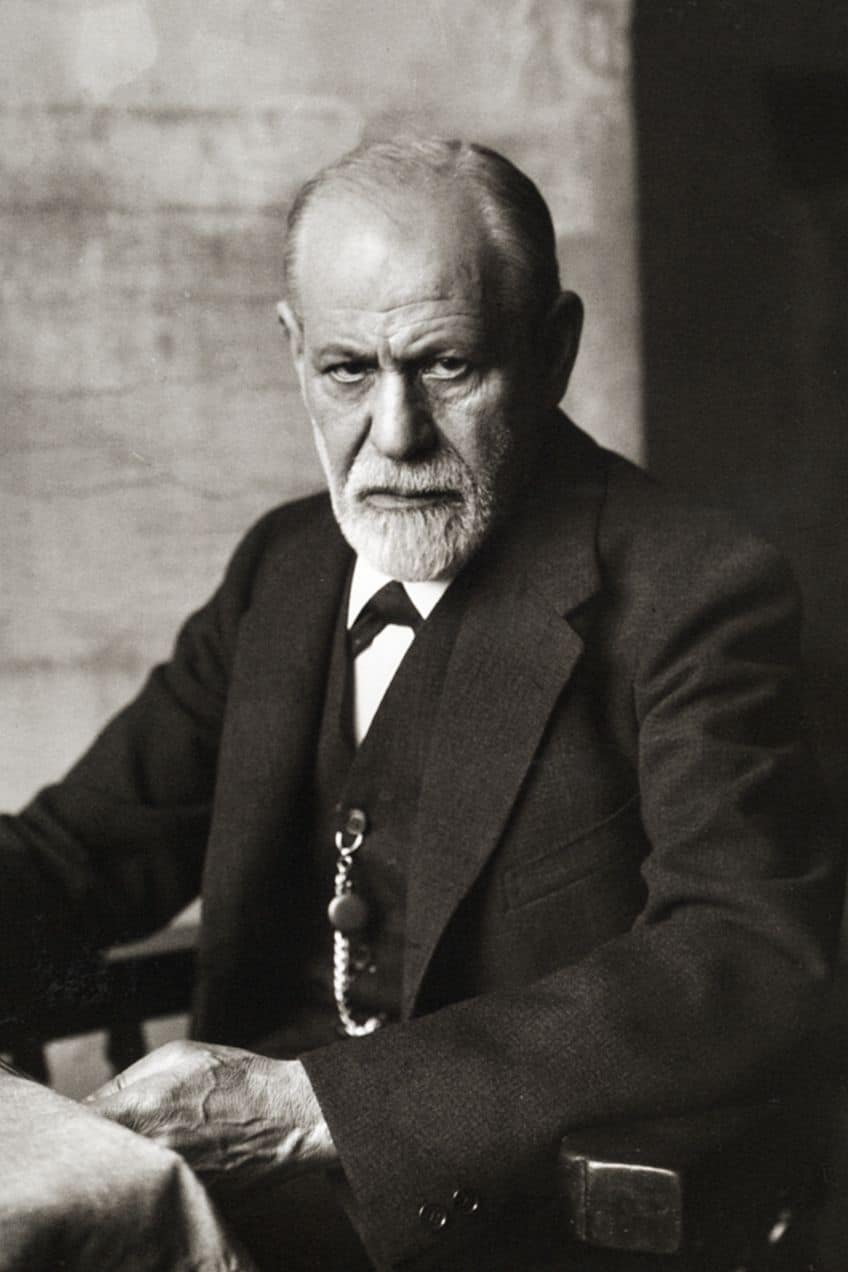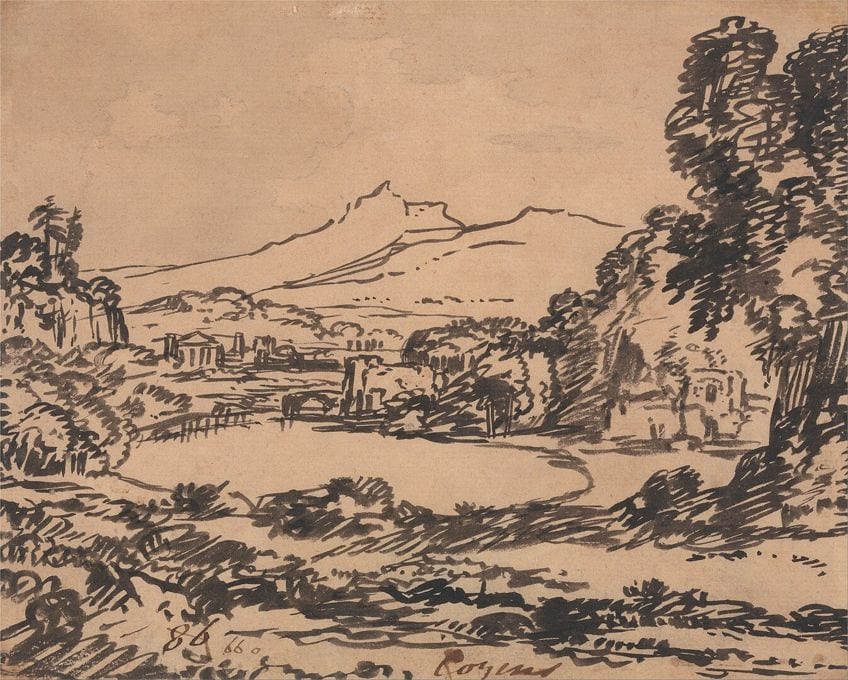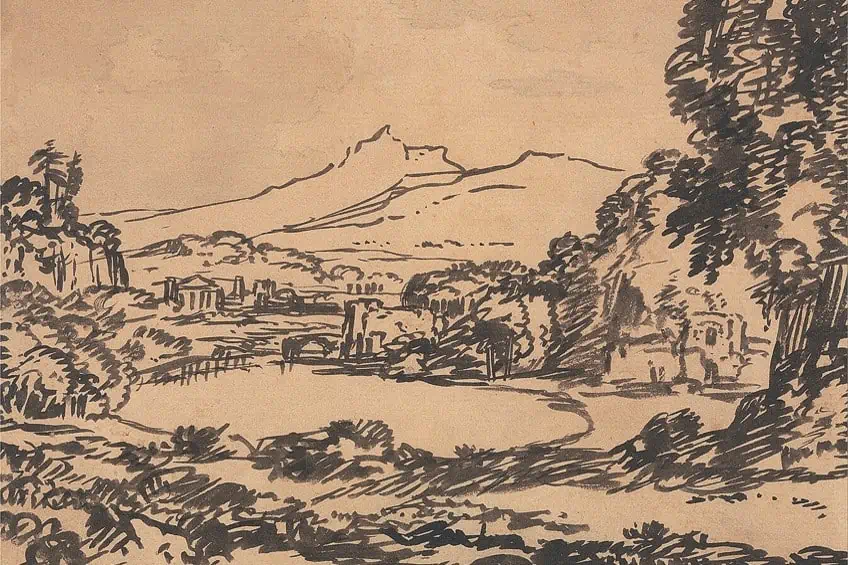Automatic Drawing – Making Art Subconsciously
What is automatic drawing, and what does this art form have to do with the Surrealist movement? Automatic drawing was outlined as a method adopted by Surrealists in the 20th century to suppress any form of conscious control one had over the creation of their artwork. In this article, we will dive into a more in-depth examination of this technique and its history in the 20th century as an important component of automatism. Keep reading for more about this fascinating and unique art approach!
Contents
An Introduction to Surrealist Automatism
What is automatic drawing? One may immediately wonder how it is possible to achieve an “automatic” drawing without the use of digital technology today, however, this method was adopted as far back as the 20th century. Famous members of the Dada movement such as Hans Arp, as well as Surrealists such as André Masson pioneered the use of automatic drawing as a technique that involved anything but computer-generated artwork. Before we dive into the definition of automatic drawing, we will explore a brief overview of Surrealist Automatism that will provide you with all you need to know about the founding of the technique and its conceptual significance.
Surrealist Automatism art is described as a method by which an artist approaches an artwork, such that they lead their creative process from an unconscious point of view. This ties into the art of automatic drawing since these drawings are created when the artist relinquishes their conscious control over the formal elements of the artwork, and as such, results in a reflection of the artist’s psyche.
Important theoretical works related to Surrealist Automatism art and automatic drawing in the 20th century include works such as The Automatic Message (1933) by André Breton, who adopted a technique known as psychographic or automatic writing. André Breton was at the forefront of Surrealist theory in the early 20th century and is considered a pioneer of “pure psychic automatism”.

Apart from automatic drawings in Surrealism, automatism as a concept was rooted in writing, and other art forms, when such processes are led by the subconscious mind. The method has been compared to the technique known as non-idiomatic improvisation. One can also compare the approach of automatic drawings to that of an intuitive approach, whereby the artist releases control over the visual outcome of the drawing.
The term “automatism” was borrowed from physiology, which outlined the term as bodily movements that were not consciously controlled and were, therefore, naturally occurring.
Famous psychoanalyst Sigmund Freud also used the concept of automatism to explore the minds of his patients and was a significant influence on figures like André Breton, who launched the Manifesto of Surrealism in 1924. Breton described psychic automatism as “the dictation of thought in the absence of all control exercised by reason and existing outside all moral or aesthetic concerns”. Automatic writing and automatic drawings were thus the first forms of art used to explore the concept of Surrealist Automatism and the depths of the human psyche.

Other art forms such as collage also became popular in the Surrealist movement as artists such as Max Ernst paved the path for the use of found imagery and media illustrations as a form of automatism in art. Techniques such as grattage and frottage were developed and explored in Surrealist collage and painting by artists such as Andre Masson, Joan Miro, and Max Ernst.
The impact of automatism influenced the development of other movements such as Abstract Expressionism, Art Informel, and Arte Nucleare.
The Art of Automatic Drawing
What is automatic drawing, and how does one define it? As outlined above, automatic drawing involves the act of “free drawing” led by the unconscious mind and is a Surrealist technique used to draw out information about the artist’s unconscious state. One might wonder, does chance or intuition play a role in automatic drawing, and can one truly release control when drawing? While these are important questions, it is important to note that automatic drawing can encompass a sense of intuition and chance, which reflects the artist’s ability to release control in an artwork themselves.
Many artists relied on chance to determine the outcome of their automatic drawings, while others supposedly tapped into a state of trance to shape the drawing.
Techniques such as frottage were a Surrealist approach to drawing to create texture and reveal, in an uncontrolled manner, the textures of surfaces that emerged from rubbing a piece of charcoal over a paper that was placed over an object to lift an impression. The art of automatic drawing has also been compared to a machine-like approach inspired by the idea of an automaton as seen in a video by Philippe Parreno, The Writer (2007), which showcases an 18th-century Jaquet-Droz automaton writing with a goose quill pen. The video stimulates uncertainty in the viewer as to the nature of the machine-like human who performs an action usually undertaken by humans.

Such inventions like the automaton blur the lines between human organisms and the idea of “the machine”, encapsulated by “technology”. The idea of a mechanism is very much prominent in the idea of automatic drawing, and as such, its origins date back to the invention of chronophotography, led by Étienne-Jules Marey in 1882.
The graphic method was invented as an apparatus for visualization and held implications in the field of construing “figures of the visible and invisible”. To uncover the visual world that lay beyond human perception through technology was a form of translation.
Although such visualization technologies emerged in physiology, its concepts were not alienated from writers such as André Breton who explored the many mechanical devices used to examine patients at the neuro-psychiatric center in St Dizier. Automatism was also used to examine patients with suspected “hysteria” revealing a disassociation in patient personalities. The evolution of Surrealist Automatism was traced to the emergence of early scientific imaging techniques seen in the graphic method, which influenced the 20th-century Avant-Garde artists to adopt such methods of observation as a visual idiom.

Another crucial point of analysis in the examination of automatic drawing is the question of whether the art form is expressive, and if so, what does it express? These questions require one to consider the distinction between true randomness and the notions expressed by Breton about the objective chance or hasard objectif. Sigmund Freud suggested that events that seem to occur by chance such as a slip of the tongue, are led by an order of psychic determinism and proposed that nothing in the human mind was arbitrary. It goes without further detail on the matter that automatism and automatic drawing will always relay some sort of message about the unconscious activities of the artist.
On the other end of the stick, one could conclude that perhaps Surrealism was led by complete randomness, which still produced a significant impact on the development of Abstract art.
Exploring the Impersonal in Automatic Drawing
While an exploration of 20th-century Surrealist approaches to automatic drawing is important, it is equally as important to examine the role of the impersonal in automatic drawing if the notion of humanness is removed. Given that the 21st century allows for artists to incorporate artificial intelligence programs into their creative practices, it is crucial to consider how an impersonal form of automated drawing may expand the definition of automatic drawing in its relevant context.
To do this, we will use the work of Jeremy Finer, a musician, composer, and artist, to unpack the sublime presence and absence of the human in automatic drawing. Everywhere, All the Time is among the most famous automatic drawing examples and was created in 2005 as a sculptural project, undertaken by Finer as part of his residency at the Oxford University astrophysics department.
Finer’s automatic drawing was a result of an installation involving the use of a chart recorder, which was connected to a detuned radio to produce electrical fluctuations. Finer’s project drew from the Contemporary understanding of radiation as the cosmic microwave background of the universe and the cooled remnants of the first Big Bang. As such, the radiation is reflected as the static on a radio and the chart recorder’s pen acts as the universe’s spirit hand. This direct channeling of the universe’s makeup and early remnants of cosmic creation is one of the unique and sublime examples of automatic drawing, which negates the direct influence of the human psyche and presents a new set of concepts for automatic drawing and the influence of technology on the evolution of the art form.
Of important note is the impersonal aspect of Finer’s automatic drawing, which presents a translation of static messages derived from the intangible and unseen reality of radiation and scripted by a machine. The impersonal nature of the work bypasses the artist and removes the need for extensive and speculative analysis. The universe thus became the invisible artist, which reflects the psyche of the world that shapes our unconscious.
Finer’s use of the “spirit-hand” is also useful when examining the relationship between noise and communication theory.
Random noises such as unidentified static can be interpreted as interference and can be understood one step further as a Freudian slip or distortion of the original message. The notion of true randomness is a subject of interest for many scholars, which suggests a breach in causality and is separate from the concept of objective chance proposed by Surrealism. The reference to a spirit hand was also inspired by Roland Barthes’ text The Death of the Author (1967), which describes the writer as a mechanical tool or radio antenna that receives and remixes messages that are absorbed randomly. Other significant automatic drawing examples include Untitled Chinese Ink Drawing (1961) by Henri Michaux and Subway Drawing (n.d.) by William Anastasi.
Finer’s automatic drawing apparatus leaves one with much to ponder over in terms of the ways that one can conceive of an automatic drawing in the 21st century. The removal of human influence and perhaps its sublime presence in the construction and search for meaning reflects the complex future of automatism and its questionability. We hope that this review of automatic drawing and its history will inspire you to critically assess the nuances of technology in art production and the influence of chance, objective randomness, and the human subconscious on new visual art languages.
Frequently Asked Questions
What Is Automatic Drawing?
The technique of automatic drawing is derived from Surrealist Automatism, which involves an artist creating a drawing by suppressing their control and conscious influence over the work. The art of automatic drawing was inspired by a Surrealist exploration of the unconscious mind and its visual languages in the 20th century.
What Is the Goal of Automatic Drawing?
The original goal of automatic drawing was to uncover the elements of the subconscious and unconscious mind, which was a form of expression previously untouched by artists. Automatic drawing involves the principles of chance or randomness to express pure marks or visual languages that emerge from the relinquishment of conscious control.
Which Artist Invented Automatic Drawing?
Automatic drawing was invented by artists of the Surrealist movement in the early 20th century, most notably by André Masson, who commenced drawing with no planned subject in mind.
Jordan Anthony is a Cape Town-based film photographer, curator, and arts writer. She holds a Bachelor of Art in Fine Arts from the University of the Witwatersrand, Johannesburg, where she explored themes like healing, identity, dreams, and intuitive creation in her Contemporary art practice. Jordan has collaborated with various local art institutions, including the KZNSA Gallery in Durban, the Turbine Art Fair, and the Wits Art Museum. Her photography focuses on abstract color manipulations, portraiture, candid shots, and urban landscapes. She’s intrigued by philosophy, memory, and esotericism, drawing inspiration from Surrealism, Fluxus, and ancient civilizations, as well as childhood influences and found objects. Jordan is working for artfilemagazine since 2022 and writes blog posts about art history and photography.
Learn more about Jordan Anthony and about us.
Cite this Article
Jordan, Anthony, “Automatic Drawing – Making Art Subconsciously.” artfilemagazine – Your Online Art Source. October 27, 2023. URL: https://artfilemagazine.com/automatic-drawing/
Anthony, J. (2023, 27 October). Automatic Drawing – Making Art Subconsciously. artfilemagazine – Your Online Art Source. https://artfilemagazine.com/automatic-drawing/
Anthony, Jordan. “Automatic Drawing – Making Art Subconsciously.” artfilemagazine – Your Online Art Source, October 27, 2023. https://artfilemagazine.com/automatic-drawing/.



